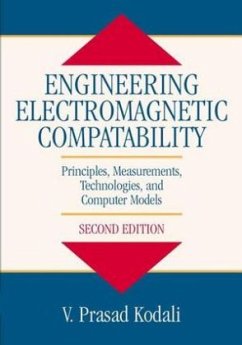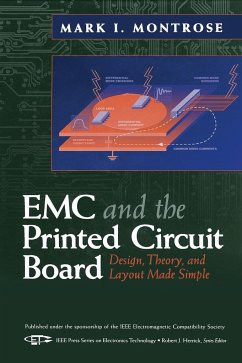
Advanced Modeling in Computational Electromagnetic Compatibility

PAYBACK Punkte
94 °P sammeln!
Learn the latest numerical methods to solve complex electromagnetic compatibility problemsThis text combines the fundamentals of electromagnetics with numerical modeling to tackle a broad range of current electromagnetic compatibility (EMC) problems, including problems dealing with lightning, transmission lines, and grounding systems. The author sets forth a solid foundation in the basics before advancing to specialized topics. Not only do readers learn to solve EMC problems, they also learn to develop their own EMC computational models for applications in both research and industry.Advanced M...
Learn the latest numerical methods to solve complex electromagnetic compatibility problems
This text combines the fundamentals of electromagnetics with numerical modeling to tackle a broad range of current electromagnetic compatibility (EMC) problems, including problems dealing with lightning, transmission lines, and grounding systems. The author sets forth a solid foundation in the basics before advancing to specialized topics. Not only do readers learn to solve EMC problems, they also learn to develop their own EMC computational models for applications in both research and industry.
Advanced Modeling in Computational Electromagnetic Compatibility is divided into three complementary parts:
_
Part One, Fundamental Concepts in Computational Electromagnetic Compatibility, provides readers with all the fundamentals of electromagnetic theory. Next, the author introduces the basics of numerical modeling, including the design and use of computational models for the analysis of static, quasi-static, and scattering problems.
_
Part Two, Analysis of Thin Wire Antennas and Scatterers, analyzes wire antennas using the frequency domain and the time domain integral equation formulation. The author demonstrates the advantage of the Boundary Element Method for handling EMC problems that involve analysis of wire configurations of arbitrary shapes.
_
Part Three, Computational Models in Electromagnetic Compatibility, sets forth the solutions of specific EMC problems using the wire antenna theory presented in Part Two. The final chapter examines the growing controversy surrounding the potential health risks associated with exposure to low frequency and transient electromagnetic fields.
Throughout the text, numerical examples taken from both academia and industry are provided. References at the end of each chapter guide readers to additional information for each topic. In short, with this text, readers can fully leverage antenna theory and numerical methods for the solution of EMC problems.
This text combines the fundamentals of electromagnetics with numerical modeling to tackle a broad range of current electromagnetic compatibility (EMC) problems, including problems dealing with lightning, transmission lines, and grounding systems. The author sets forth a solid foundation in the basics before advancing to specialized topics. Not only do readers learn to solve EMC problems, they also learn to develop their own EMC computational models for applications in both research and industry.
Advanced Modeling in Computational Electromagnetic Compatibility is divided into three complementary parts:
_
Part One, Fundamental Concepts in Computational Electromagnetic Compatibility, provides readers with all the fundamentals of electromagnetic theory. Next, the author introduces the basics of numerical modeling, including the design and use of computational models for the analysis of static, quasi-static, and scattering problems.
_
Part Two, Analysis of Thin Wire Antennas and Scatterers, analyzes wire antennas using the frequency domain and the time domain integral equation formulation. The author demonstrates the advantage of the Boundary Element Method for handling EMC problems that involve analysis of wire configurations of arbitrary shapes.
_
Part Three, Computational Models in Electromagnetic Compatibility, sets forth the solutions of specific EMC problems using the wire antenna theory presented in Part Two. The final chapter examines the growing controversy surrounding the potential health risks associated with exposure to low frequency and transient electromagnetic fields.
Throughout the text, numerical examples taken from both academia and industry are provided. References at the end of each chapter guide readers to additional information for each topic. In short, with this text, readers can fully leverage antenna theory and numerical methods for the solution of EMC problems.












